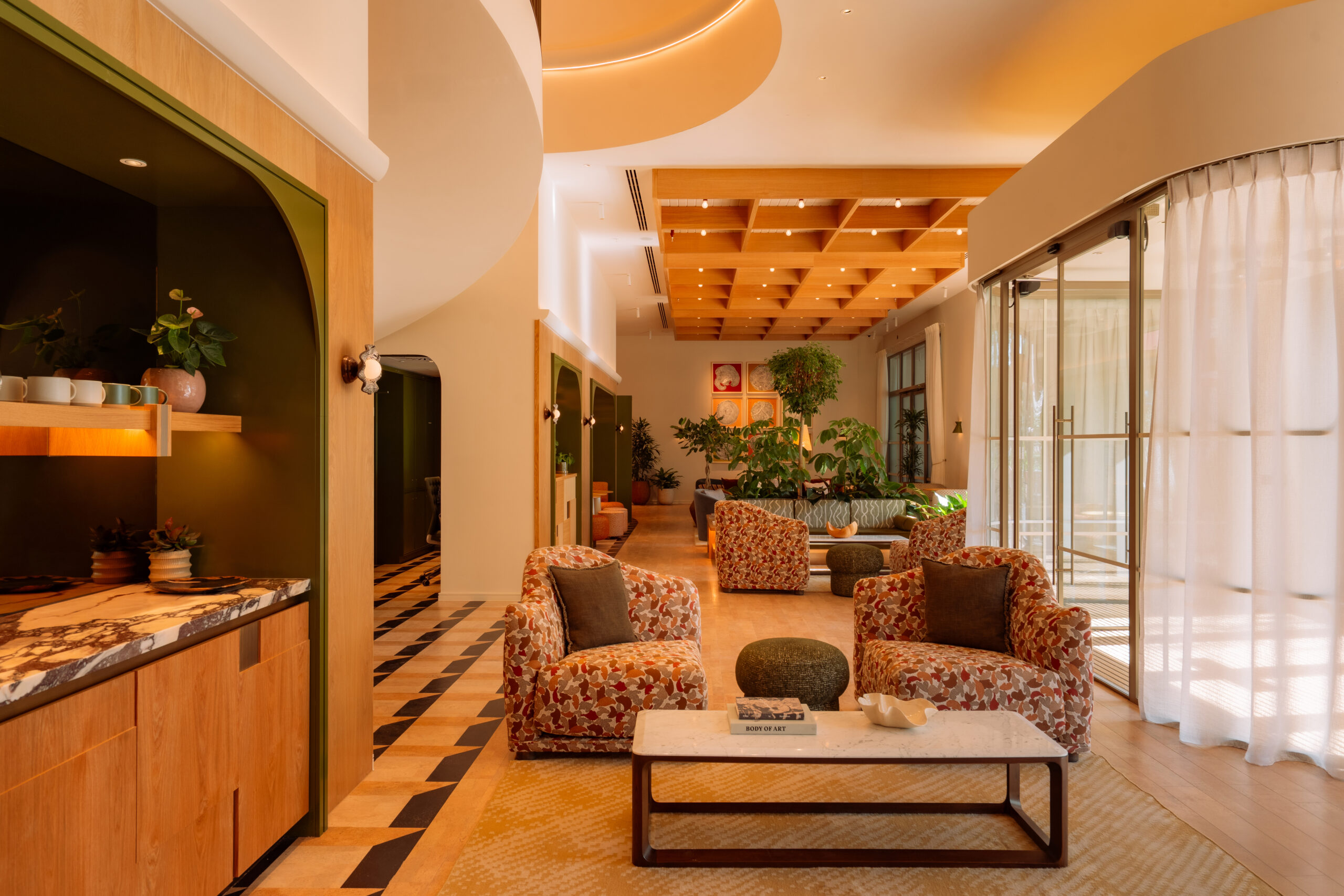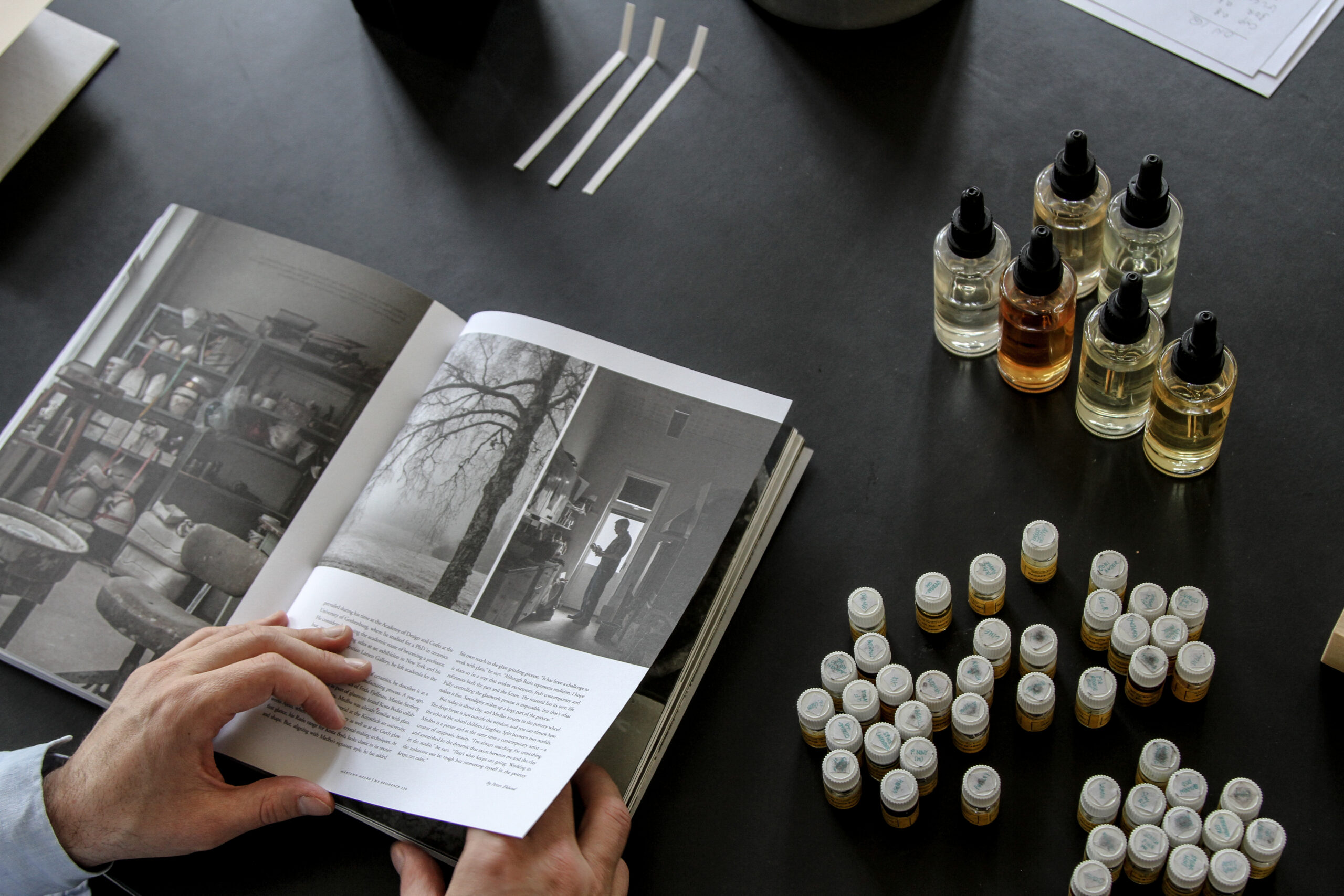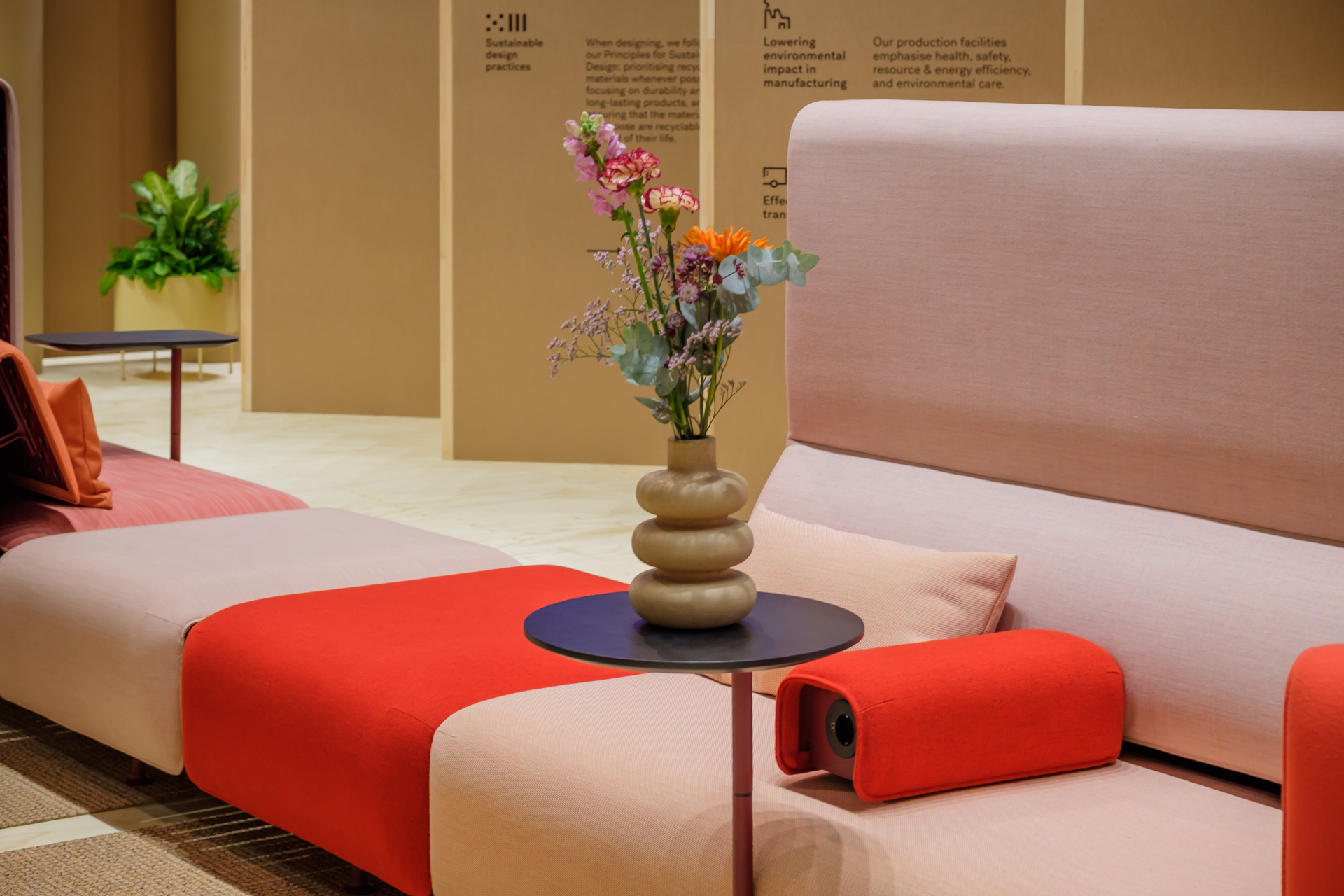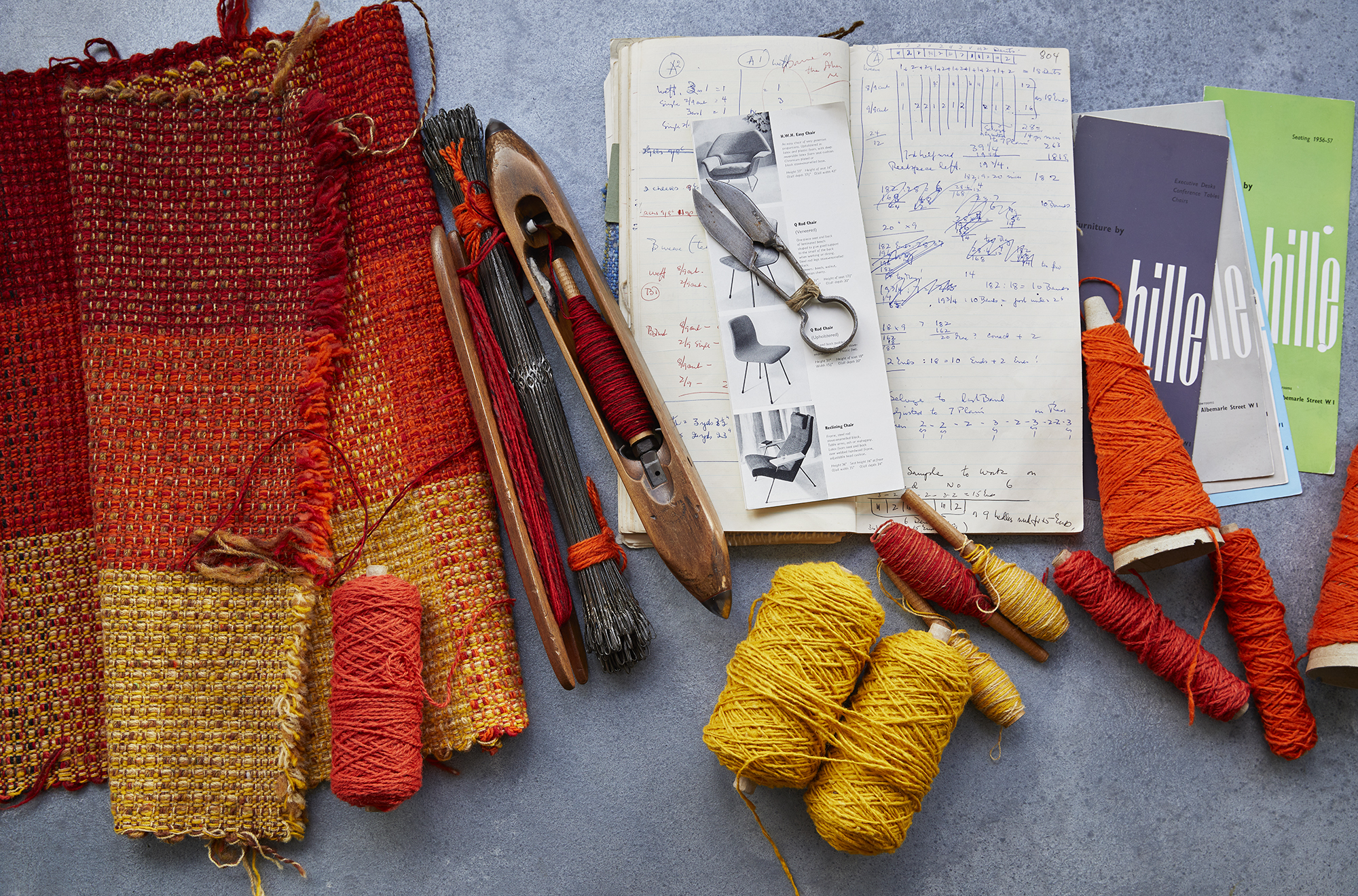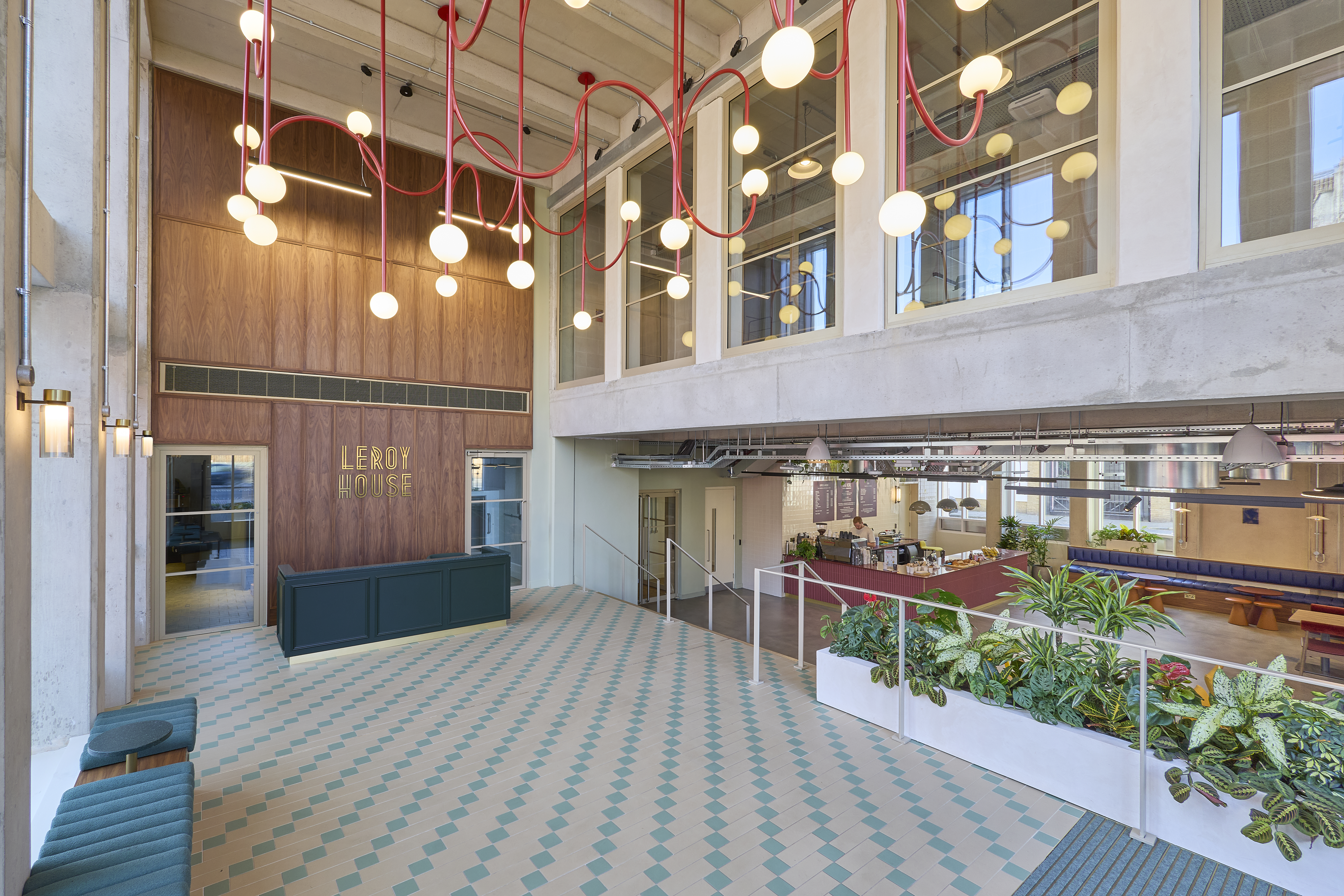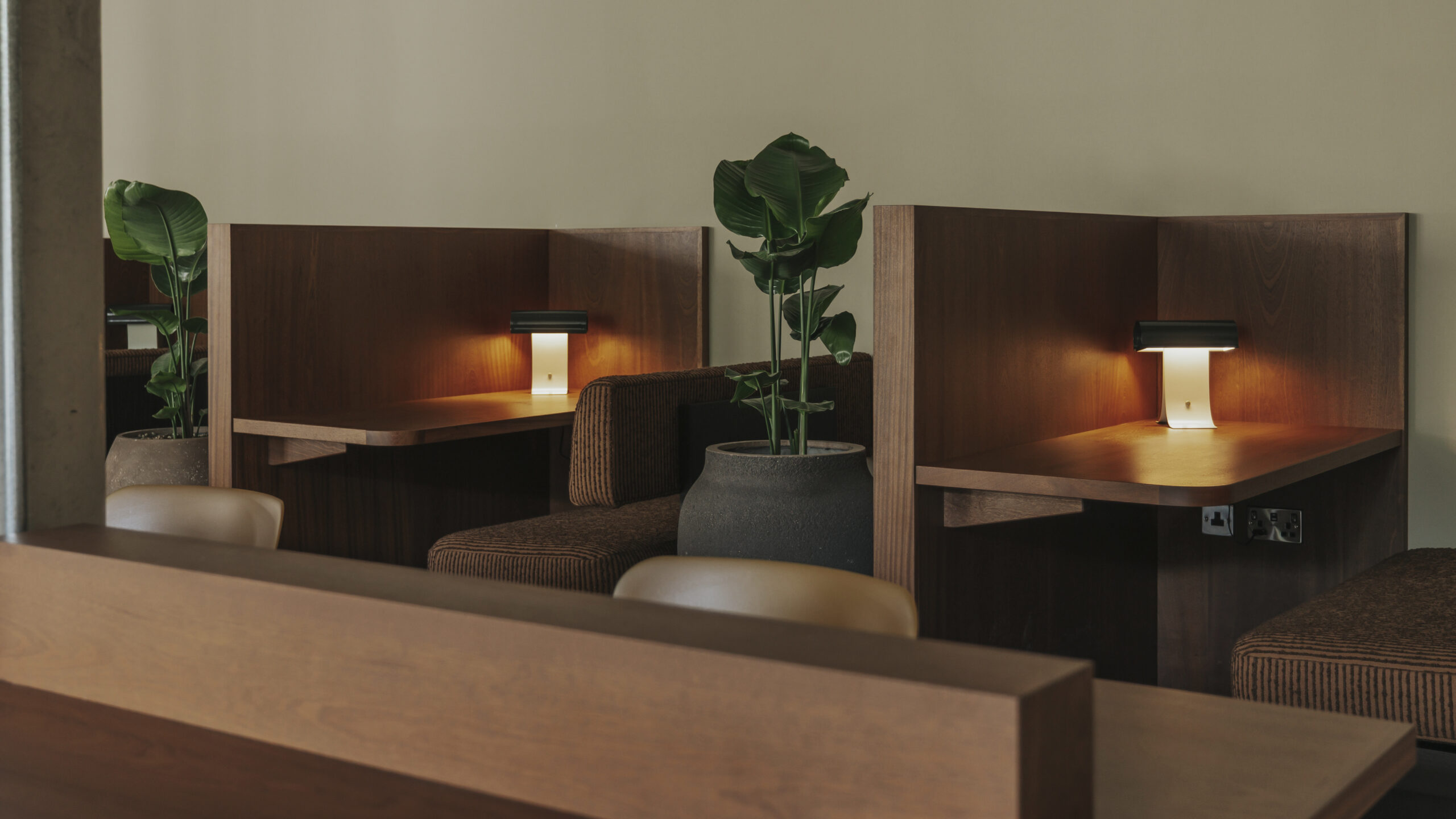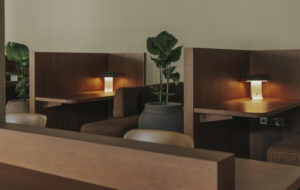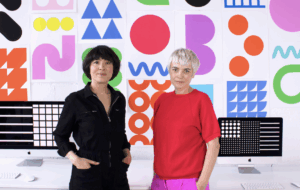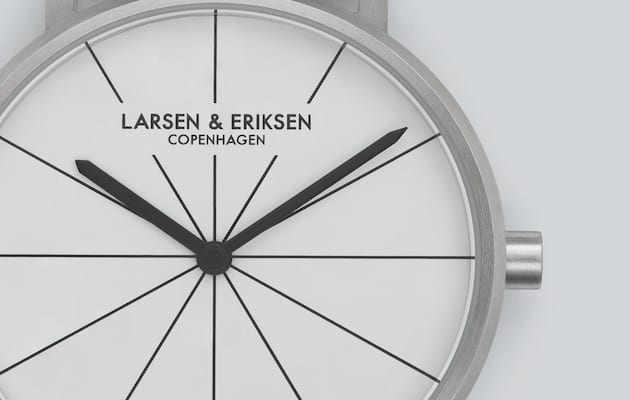 |||
|||
It is 11:47am. Standing in a courtyard just off Gammel Kongevej, a principal shopping street in Copenhagen’s Frederiksberg municipality, I am greeted by one half of Danish watch-designing duo Larsen & Eriksen. “Right on time!” says Magnus Eriksen, before ushering me inside a charming old backhouse, home to the company’s design studio. Off the beaten path – a phrase that can not only be used to describe the locale but also encapsulates the essence of the brand, newly established by Eriksen and childhood friend-turned-business partner Jeppe Larsen.
The pair first met when Eriksen joined Larsen’s class at the School of Absalon (Absalons Skole), a folkeskole – the Danish equivalent of primary and lower secondary education – in Roskilde, just outside Copenhagen. “I got thrown into a class where Jeppe happened to be and since that day we’ve been best friends! That’s how we met, and we’ve more or less followed each other ever since,” recalls Eriksen, alluding to the very different
vocational paths each of them took prior to setting up their current business.
 Magnus Eriksen (on the left) and Jeppe Larsen first met in Roskilde
Magnus Eriksen (on the left) and Jeppe Larsen first met in Roskilde
“Jeppe became head of operations in a logistics and transportation company and after I finished my master’s degree in psychology, at Copenhagen Business School, I had the option of either going full time in management or quit my safe and sound job.” Fortunately for watch enthusiasts, both Eriksen and Larsen chose the latter and in December 2016 Larsen & Eriksen was born.
The studio spent two years perfecting its inaugural collection, ‘Absalon’, which paid homage to the duo’s hometown, history and heritage. “The entire bicycle culture and clean urban lines of Copenhagen inspired the design and logo of the collection.” Silhouettes of Copenhagen can be found engraved on the back of each watch. “It is a hidden bit of a story. The subtlety is that no one sees it but if you own the watch, you know it’s there.”
 Eriksen and Larsen draw every detail of their watches by hand at their Copenhagen
Eriksen and Larsen draw every detail of their watches by hand at their Copenhagen
As Eriksen explains this quirky feature, a memorable phrase from the Larsen & Eriksen website springs to mind. ‘Discreet modernism’ is a phrase coined by curator and cultural critic Jeppe Ugelvig in an article written for the autumn/winter 2018 issue of Danish lifestyle magazine Dansk. Ugelvig ascribes Larsen & Eriksen to the ‘discreet modernist’ movement and the studio has since taken the term as its modus operandi. It is the understated, the subtle and, indeed, the discreet that make Larsen & Eriksen tick. Clean lines, graphic simplicity and precise details characterise each and every watch created by Larsen & Eriksen’s ‘discreetly modern design studio’.
Although the aesthetic of Larsen & Eriksen’s timepieces may evoke a timeless quality, these are not typical wrist watches. “Jeppe and I draw every single detail by hand here in Copenhagen. There’s not a single angle, material or anything that we haven’t created or chosen ourselves, and that was to make sure we ended up with a design and product that was unique,” Eriksen explains, before specifying what goes into making a Larsen & Eriksen watch. “We source the watch movements from the renowned Ronda factory in Switzerland and the watches are assembled, by hand, in our carefully curated facilities in Shenzhen, China.”
 Tough 316L stainless steel is used for the case of Larsen & Eriksen’s Absolon
Tough 316L stainless steel is used for the case of Larsen & Eriksen’s Absolon
An amalgamation of the finest horological materials on the market: 316L stainless steel – one of the hardest and most durable types of stainless steel – is used to make the watch case. Calf leather is used for the straps and an extra strong mineral crystal – that is 1mm thick instead of the industry standard 0.6mm – comprises the glass. Both Eriksen and Larsen also make frequent trips to check on every part of the production process to ensure the entire production line runs like clockwork. The pair’s hands-on approach is equally evident in other aspects of the company. “Jeppe and I carefully pack every single watch by hand in our customised packaging here in Copenhagen before they go out into the big world.”
More workwear accessories – OnOffice Curates: Sustainable, vegan and recycled work bags
Although Larsen & Eriksen watches are stocked in 25 countries worldwide, they do not grace a single watch or jewellery store. “We only work with places where it’s interesting to go in and experience our products alongside other cool products.” With the dawn of the digital age often blamed for the death of the high street, recent years have seen remaining retailers adopt a more experience-centred strategy in an attempt to entice the modern consumer. To this end, Larsen & Eriksen’s somewhat unconventional means of distribution purely through lifestyle, design and fashion channels make perfect sense.
 A silhouette of the Copenhagen skyline is discreetly engraved on each Absalon
A silhouette of the Copenhagen skyline is discreetly engraved on each Absalon
In fact, this approach has led the brand to establish relationships with institutions such as the Louisiana Museum of Modern Art – which the duo collaborated with on the exclusive ‘Louisiana’ collection – and the Danish Architecture Centre (DAC), where a permanent display of Larsen & Eriksen watches resides.
British philosopher Alan Watts famously once said that museums are “places where art goes to die”. This is interesting to note, particularly when one considers the relatively recent emergence of the smart watch and the looming question of whether or not the analogue wrist watch will soon become obsolete. I pose this question to Eriksen, who calmly replies: “There is an immortality to the analogue wristwatch.”
 The watches are packed by Eriksen and Larsen themselves in
The watches are packed by Eriksen and Larsen themselves in
It soon becomes clear that an undying passion for the art of the analogue watch is what sets Larsen & Eriksen apart in an increasingly over-saturated market; an aspect of the brand which permeates subsidiary marketing materials such as its website. Take Larsen & Eriksen’s bloglike webpage, aptly titled Chronicle, for example. An engaging, yet earnest, digital love letter addressed to the analogue icon, Chronicle constitutes a unique and novel way for the brand to connect with its target market. “A clear ambition from the beginning was to design for more or less everyone, everywhere,” Eriksen explains. “There’s no right and wrong, no men and women, no young and old. It is just making timeless watches and making those watches accessible to all kinds of people.”
Eriksen and Larsen based their all-encompassing business model on the founding principles of mid-century Danish modernist design, established back in 1950s and 60s, which prioritised the democratisation of design.
 The understated Larsen & Eriksen look is continued through to the company’s packaging
The understated Larsen & Eriksen look is continued through to the company’s packaging
Their decision to adopt the noble ethos is a testament to the company’s dedication to building a socially sustainable brand and Larsen & Eriksen’s most recent announcement suggests that this is not the only form of sustainability it wants to champion. The young design studio recently became carbon positive by partnering with climate change pioneer Chooose – in turn demonstrating how to turn a passion project into a business that is both economically and environmentally sustainable.
With time slowly, but surely, running out, I turn to Eriksen and ask what he and Larsen are most proud of. “When we refer to what has been the highlight of this entire journey I think, of course, of our Louisiana collaborations, getting into key retailers, good sales and stuff like that, but getting into the office on a Sunday and having a couple of people, maybe even volunteers, sitting here and working because they like it…” People contributing seconds, minutes and hours to Larsen & Eriksen’s labour of love – the stylish upkeep of time itself – “That’s a very nice memory to have.”
Cult watch designers Larsen & Eriksen merge the principles of classic and contemporary Danish design to create a distinct yet discreet modernist aesthetic

